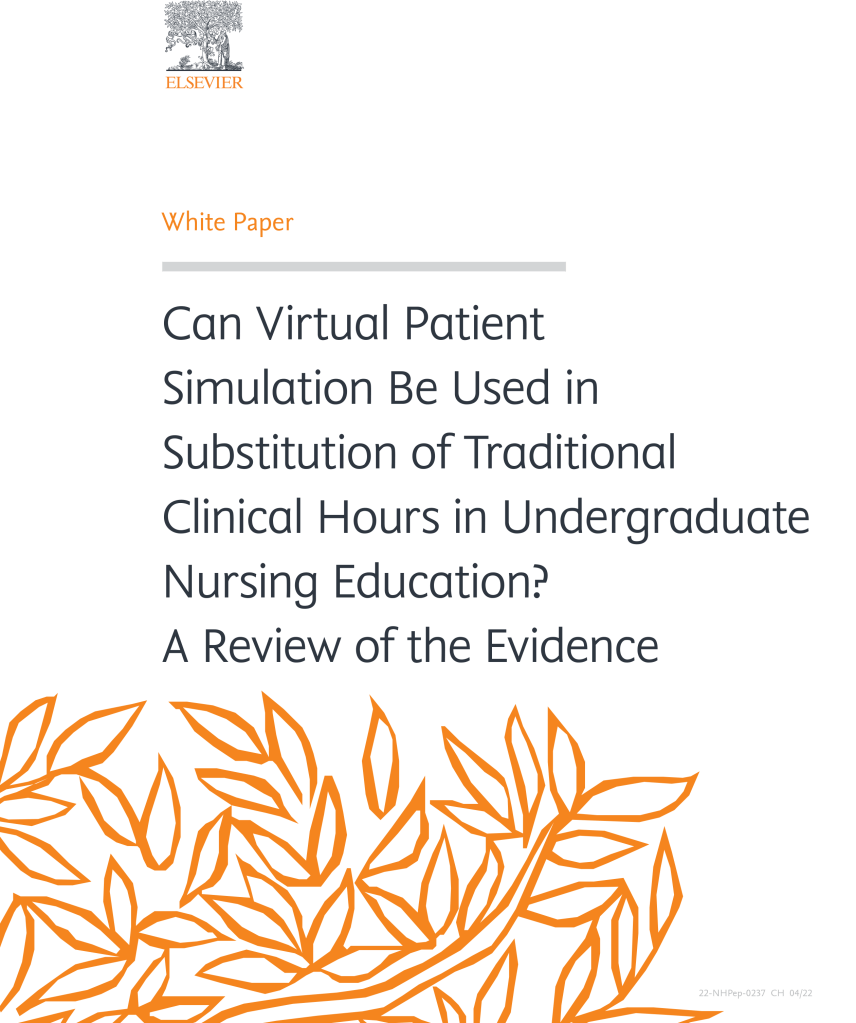
As the field of nursing education continues to improve this educational strategy, several studies have examined the effects of simulation on student outcomes when used in substitution for traditional clinical hours. The purpose of this white paper is to examine evidence of the effectiveness of this strategy, identify best practices for its implementation across the undergraduate nursing curriculum, and discuss the role that Elsevier’s Shadow Health Digital Clinical Experiences™ could potentially play in improving the preparation of students as faculty adopt virtual patient simulation into their course.
This white paper report explores the multiple advantages for nursing students, instructors, and administrators when virtual patient simulation is used in place of traditional clinical hours.

Beyond relocating how clinical hours are spent, an opportunity also arises to address how state BONs, accrediting bodies, and nursing schools should re-conceptualize hands-on clinical experiences considering the evidence supporting the use of simulation in lieu of traditional hours.
White paper highlights
- Nursing education and simulation experts who have further discussed the results and significance of the NCSBN Simulation Study agree on the fact that this study provided the building blocks of the use of simulation as a replacement of traditional clinical experiences in undergraduate nursing education (Rutherford-Hemming et al., 2016).
- Second, virtual patient simulation is comparable, if not superior, to other forms of high-fidelity simulation.
- Third, Shadow Health’s Digital Clinical Experiences also addresses the challenges brought up by other forms of high-fidelity simulation, especially in these times when there is a deficiency in the clinical hours available to nursing students and quality clinical placements are difficult to secure for traditional and nontraditional students.
- Finally, there is emerging evidence towards a 2:1 clinical-to-simulation ratio.